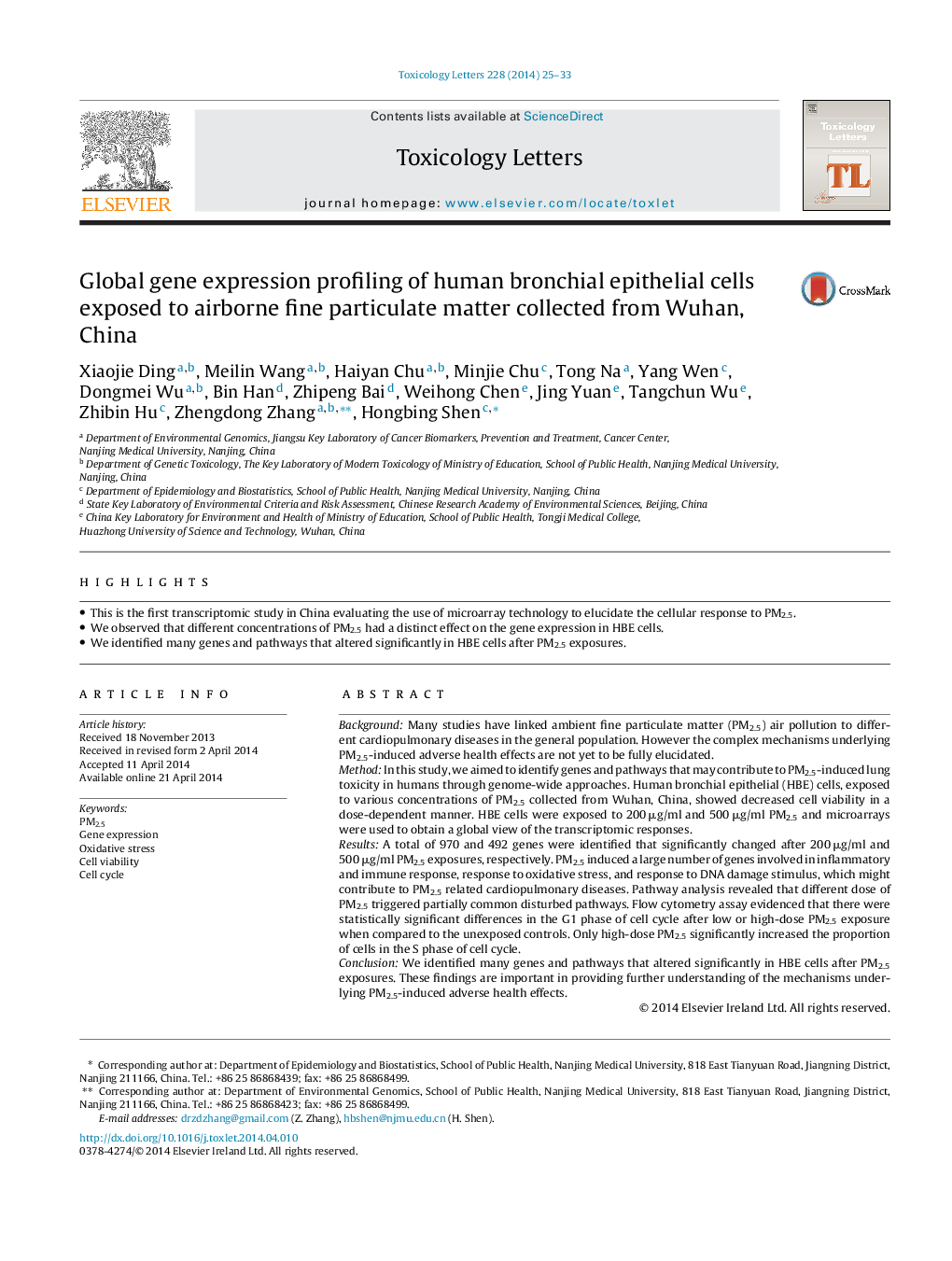| کد مقاله | کد نشریه | سال انتشار | مقاله انگلیسی | نسخه تمام متن |
|---|---|---|---|---|
| 2598912 | 1133167 | 2014 | 9 صفحه PDF | دانلود رایگان |
• This is the first transcriptomic study in China evaluating the use of microarray technology to elucidate the cellular response to PM2.5.
• We observed that different concentrations of PM2.5 had a distinct effect on the gene expression in HBE cells.
• We identified many genes and pathways that altered significantly in HBE cells after PM2.5 exposures.
BackgroundMany studies have linked ambient fine particulate matter (PM2.5) air pollution to different cardiopulmonary diseases in the general population. However the complex mechanisms underlying PM2.5-induced adverse health effects are not yet to be fully elucidated.MethodIn this study, we aimed to identify genes and pathways that may contribute to PM2.5-induced lung toxicity in humans through genome-wide approaches. Human bronchial epithelial (HBE) cells, exposed to various concentrations of PM2.5 collected from Wuhan, China, showed decreased cell viability in a dose-dependent manner. HBE cells were exposed to 200 μg/ml and 500 μg/ml PM2.5 and microarrays were used to obtain a global view of the transcriptomic responses.ResultsA total of 970 and 492 genes were identified that significantly changed after 200 μg/ml and 500 μg/ml PM2.5 exposures, respectively. PM2.5 induced a large number of genes involved in inflammatory and immune response, response to oxidative stress, and response to DNA damage stimulus, which might contribute to PM2.5 related cardiopulmonary diseases. Pathway analysis revealed that different dose of PM2.5 triggered partially common disturbed pathways. Flow cytometry assay evidenced that there were statistically significant differences in the G1 phase of cell cycle after low or high-dose PM2.5 exposure when compared to the unexposed controls. Only high-dose PM2.5 significantly increased the proportion of cells in the S phase of cell cycle.ConclusionWe identified many genes and pathways that altered significantly in HBE cells after PM2.5 exposures. These findings are important in providing further understanding of the mechanisms underlying PM2.5-induced adverse health effects.
Journal: Toxicology Letters - Volume 228, Issue 1, 3 July 2014, Pages 25–33
